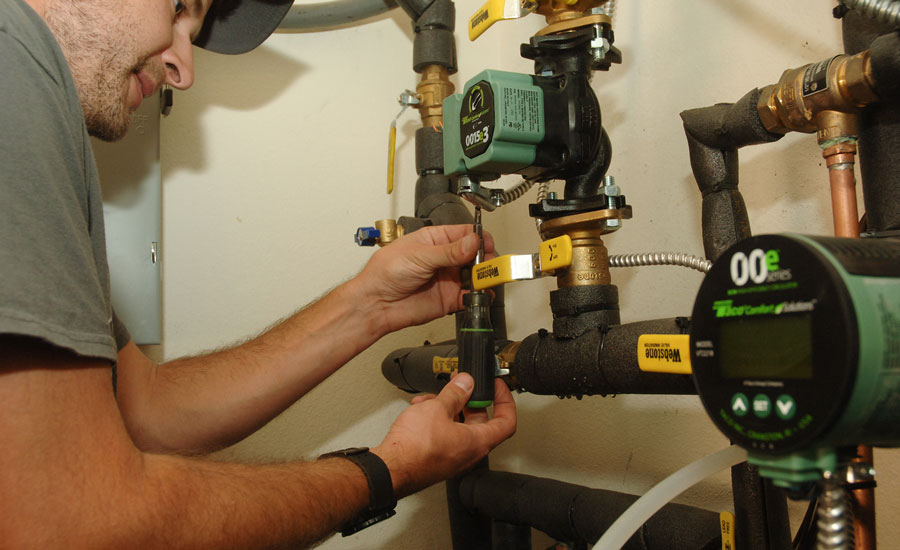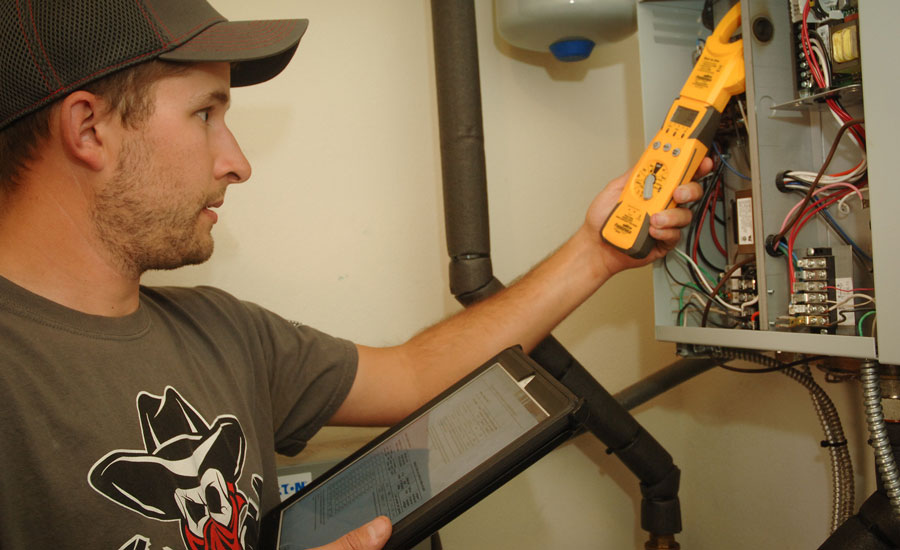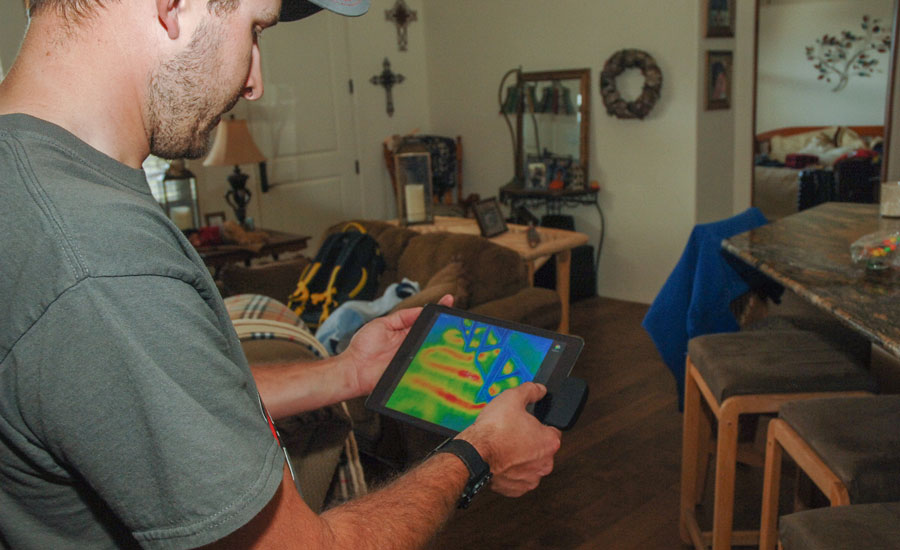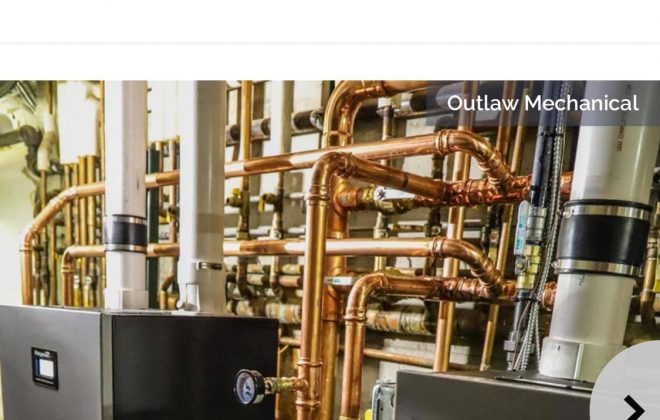Our Specialty: High-desert Hydronics
https://www.achrnews.com/articles/135003-our-specialty-high-desert-hydronics
Heating and cooling systems often run on the same day
May 15, 2017
By: Keefer Rader, Owner of Outlaw Mechanical, ACHR The News Columnist
KEYWORDS hydronics zone / quality assurance
Albuquerque, New Mexico, is a mile-high desert city known for its extremes. You’d hardly think it’s a rational place for a million people to live with a climate best suited to desert animals, but the population just grows and grows.
When people think of New Mexico, they think of sand and heat. When I’m with trade pros from outside the area, they’re always surprised to learn that we use a minus 38°F outdoor design temperature for hydronic systems above 9,000 feet, and 0° for jobs at 5,000-9,000 feet.



Heck, it isn’t uncommon for heating and cooling systems to both run on the same day.
In 2008, I moved to Albuquerque from Colorado to establish Outlaw Mechanical. Colorado taught me a few things about the need for tough, durable HVAC systems, so, today, about 40 percent of Outlaw’s work is hydronic.
OUTDOOR WHAT-SET?
We service a lot of existing systems. One of the most common problems involves a lack of simple, modern controls. I’ve found that one of the easiest ways to modernize old systems — assuming the equipment’s working decently — is to recommend programmable thermostats and an outdoor reset.
Among our frequent recommendations, and always in stock, are Taco’s FuelMizer SR501 or PC700-2 boiler reset controls as well as Honeywell’s VisionPRO 8000 programmable Wi-Fi thermostats.
We’ll control both hydronic heat and a/c with one stat. With a few added sensors for supply and return on the boiler, and with the use of an equipment interface module (EIM) control, we, or the homeowner, can monitor the system via Wi-Fi.
Not long ago, I was explaining the need for improved controls to a customer. And, while I used the term “outdoor reset” at least half a dozen times, he kept forgetting the term. He grasped the idea that the technology allowed his boiler to know what temperature it was outside and that it modulated performance accordingly, but he kept saying, “Outdoor what-set?”
It surprises me that, even with systems installed by other firms within the past five to 10 years, it’s not uncommon to see that outdoor reset controls weren’t installed. Just the other day, I came across a new modulating-condensing boiler that wasn’t equipped with an outdoor reset.
If ever there was a place for outdoor reset, New Mexico’s extreme climate is it.
Outdoor resets are critical in this area. We can have 60° temperature swings in a day, so it’s easy to overshoot a radiant slab if the outdoor reset isn’t properly installed and adjusted.
HOT ROCKS FOR FLOORS
Late last fall, we were contacted about installing a wood burning boiler, or possibly a gas boiler, at a home out in the desert country. The idea was to supplement an electric boiler that was already in place.
When I arrived at the customers’ home the next day, I noticed they had a very large photovoltaic solar array on the home’s roof.
They walked me around, explaining this was their “forever dream home.”
They explained that they added the PV capability to generate up to 16 kW of electrical energy with the idea of being utility-free for the rest of their lives.
But, there was a gremlin in the plan. During the heating season, they were paying an average of $800 a month for electricity to heat the home. They also said they were upset with inconsistent heat/overheating inside.
An in-floor radiant heat system had been installed, but because of the awful performance of the system, they’d simply given up on the idea of using it, ready to chalk it up as a loss.
“We’ve tried everything,” said the man of the house. “We got ripped off, and we know there’s no other alternative.”
In one corner of the den was a newly installed wood stove. The mechanical closet was located in the garage. With one look, I told them that the boiler was piped incorrectly.
They told me, no, they’d had the original contractor out dozens of times only to learn that nothing was wrong with the system.
“That’s what you get with an electric boiler,” they were told.
The original installer also tried to convince the homeowners they were lucky they had the solar PV system or else their bill would have been much, much higher.
Once they finally arrived at the notion that the original installer wasn’t truthful or helpful, they had additional contractors examine the system. Each one told them the same thing.
SHERLOCK HOLMES
I don’t look like Sherlock Holmes. I don’t smoke a pipe or wear a goofy tweed hat; however, on my first day there, I began my investigation. In addition to no primary/secondary system piping, I dug further to see that the water temp was set at 180° — only 40°-50° higher than their floor system required.
I fired-up all the zones and returned a few hours later. With my Flir thermal imaging camera in hand, I scoured the house, making notations. I had two awe-inspired homeowners in tow.
Eventually, I could determine that some of the ½-inch radiant tubing loops were 500 feet in length — 40 percent longer than they should be.
The Slant Fin, two-stage, cast-iron boiler was doing its job just fine, but it was clearly working a lot harder than necessary and was cycling frequently — often with the boiler in second-stage operation. The homeowners had yet to receive a moment of comfort.
As it was piped, the best I could get out of it was a 46° delta T. On top of everything else, the system water was raw and never was flushed after the install. The dark sludge within the system reeked of flux.
My heat load calculation provided another surprise: The boiler was properly sized.
The boiler’s install manual didn’t recommend primary/secondary piping, but in my book, how could any system achieve proper water temp and improved supply return delta T without primary/secondary?
THE SIT DOWN
When discussing my findings and options for repair with the homeowners, they mentioned they’d spent a small fortune on their system and did not have the funds to replace it.
I recommended a primary/secondary loop; replacement of the main system pump with Taco’s new, three-speed 0015e circulator; and the addition of a Taco VT2218 circulator for the in-floor heat. Both of the circs are electronically commutated motor (ECM)-powered and ideal for use when electric consumption is important.
I also wanted to adjust the water temp down to 120°-130°. The last recommendation: flushing the entire system with Fernox and adding glycol.
They hired us for the work.
After doing a quick re-pipe and making the necessary repairs and replacements, the boiler found a comfortable pace for first-stage operation.
The variable-speed pump corrected the cold spots while gaining proper heat across the floor. The worst winter heating bill they received from the utility was actually a check to them for $75.
The final confirmation: They called to say it’s the most comfortable heat they’ve ever experienced. Now, they light the wood stove just for ambiance while enjoying the pure comfort of gently warmed floors.
Publication date: 5/15/2017
Categories
- Awards & Recognition (2)
- New Mexico Boilers (2)
- Radiant Heat Repair (2)
- Uncategorized (2)


